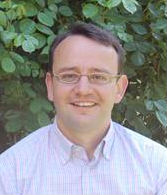Events
Theory of light-harvesting in photosynthesis: from structure to function
May 17, 2011 at 3pm/36-428
Thomas Renger
Johannes Kepler Universitat -Linz, Austria

abstract
In photosynthesis, light energy absorbed in light-harvesting pigment-protein complexes is transferred via an exciton mechanism to the reaction center where it is used to drive electron transfer reactions. The quantum efficiency of the transfer is close to 100 percent, that is, almost all excitons created reach the reaction center. In order to bridge the gap between the crystal structures of these light-harvesting proteins and optical experiments probing their function, two essential problems need to be solved. On one hand, theories of optical spectra and excitation energy transfer have to be developed that take into account the pigment-pigment (excitonic) and the pigment-protein (exciton-vibrational) coupling on an equal footing. On the other hand, the parameters entering these theories need to be calculated from the structural data. I will give a summary of recent approaches to solve the above problems and discuss applications on different light-harvesting and reaction center complexes revealing different strategies for efficient light-harvesting.
bio
Born 1970 in Zittau (Germany). Study of physics at Humboldt-University Berlin (Germany), diploma (master degree) 1995, 1998 PhD degree in theoretical physics. 1999-2001 Feodor Lynen research scholar of Alexander von Humboldt-foundation at California Institute of Technology, Pasadena (USA). 2002-2009 head of junior research group (Emmy-Noether program of German Research Foundation) at Free University Berlin (Germany), institute of chemistry and biochemistry. Since 2009 head of division Theoretical Biophysics at Johannes Kepler University, Linz (Austria).
Research: Theory of charge and excitation energy transfer and optical spectra of biological macromolecules, dynamical theory and its parametrization by quantum chemical/electrostatic methods and molecular dynamics simulations.
More detailed information can be found at: http://www.jku.at/itp/content/e61104/






